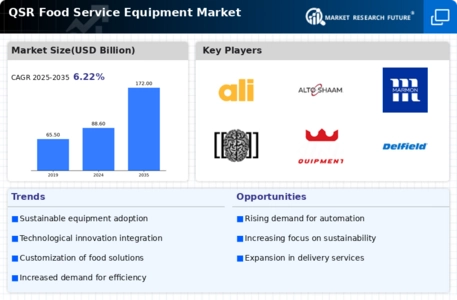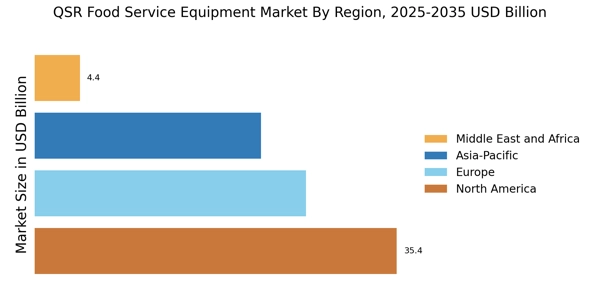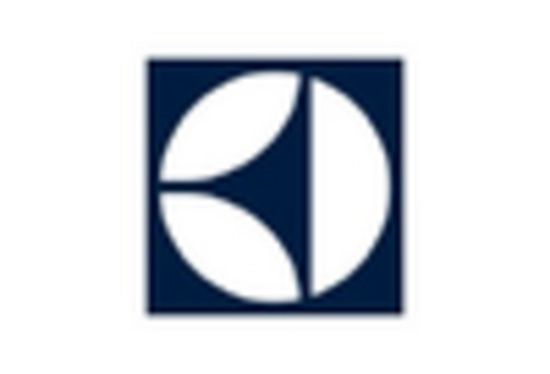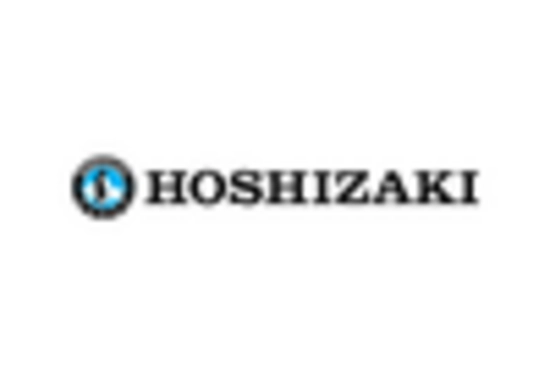Health and Wellness Trends
The growing emphasis on health and wellness among consumers is reshaping the QSR Food Service Equipment Market. As more individuals seek healthier dining options, quick-service restaurants are adapting their menus to include nutritious offerings. This shift necessitates the use of specialized equipment designed for healthier food preparation, such as air fryers and steamers. The market for health-oriented food service equipment is projected to expand, reflecting the changing consumer preferences. Consequently, the QSR Food Service Equipment Market must evolve to meet these demands, ensuring that operators are equipped to provide healthier meal options.
Rising Demand for Fast Food
The increasing consumer preference for fast food options is a primary driver of the QSR Food Service Equipment Market. As lifestyles become busier, more individuals opt for quick meal solutions, leading to a surge in demand for quick-service restaurants. This trend is reflected in the projected growth of the fast food sector, which is expected to reach a market size of approximately 800 billion dollars by 2025. Consequently, the QSR Food Service Equipment Market is likely to experience heightened demand for equipment that can efficiently support high-volume food preparation and service.
Expansion of Delivery and Takeout Services
The expansion of delivery and takeout services is a significant driver of the QSR Food Service Equipment Market. As consumers increasingly favor the convenience of dining at home, quick-service restaurants are investing in equipment that facilitates efficient food packaging and delivery. This trend is supported by data indicating that the food delivery market is expected to grow substantially, with estimates suggesting it could reach over 200 billion dollars by 2025. As a result, the QSR Food Service Equipment Market is likely to see increased demand for equipment that enhances the speed and quality of food service for delivery and takeout.
Innovations in Food Preparation Technology
Technological advancements in food preparation equipment are significantly influencing the QSR Food Service Equipment Market. Innovations such as automated cooking systems, energy-efficient appliances, and smart kitchen technologies are becoming increasingly prevalent. These advancements not only enhance operational efficiency but also improve food quality and consistency. For instance, the integration of IoT in kitchen equipment allows for real-time monitoring and management, which can lead to reduced waste and optimized resource utilization. As a result, the QSR Food Service Equipment Market is poised for growth as operators seek to adopt these cutting-edge technologies.
Focus on Sustainability and Energy Efficiency
The growing focus on sustainability and energy efficiency is becoming a crucial driver in the QSR Food Service Equipment Market. As environmental concerns rise, quick-service restaurants are increasingly seeking equipment that minimizes energy consumption and reduces waste. This trend is reflected in the adoption of energy-efficient appliances and sustainable materials in food service equipment. The market for eco-friendly equipment is projected to grow, as operators aim to align with consumer expectations for sustainable practices. Consequently, the QSR Food Service Equipment Market is likely to benefit from this shift towards greener solutions.


















Leave a Comment